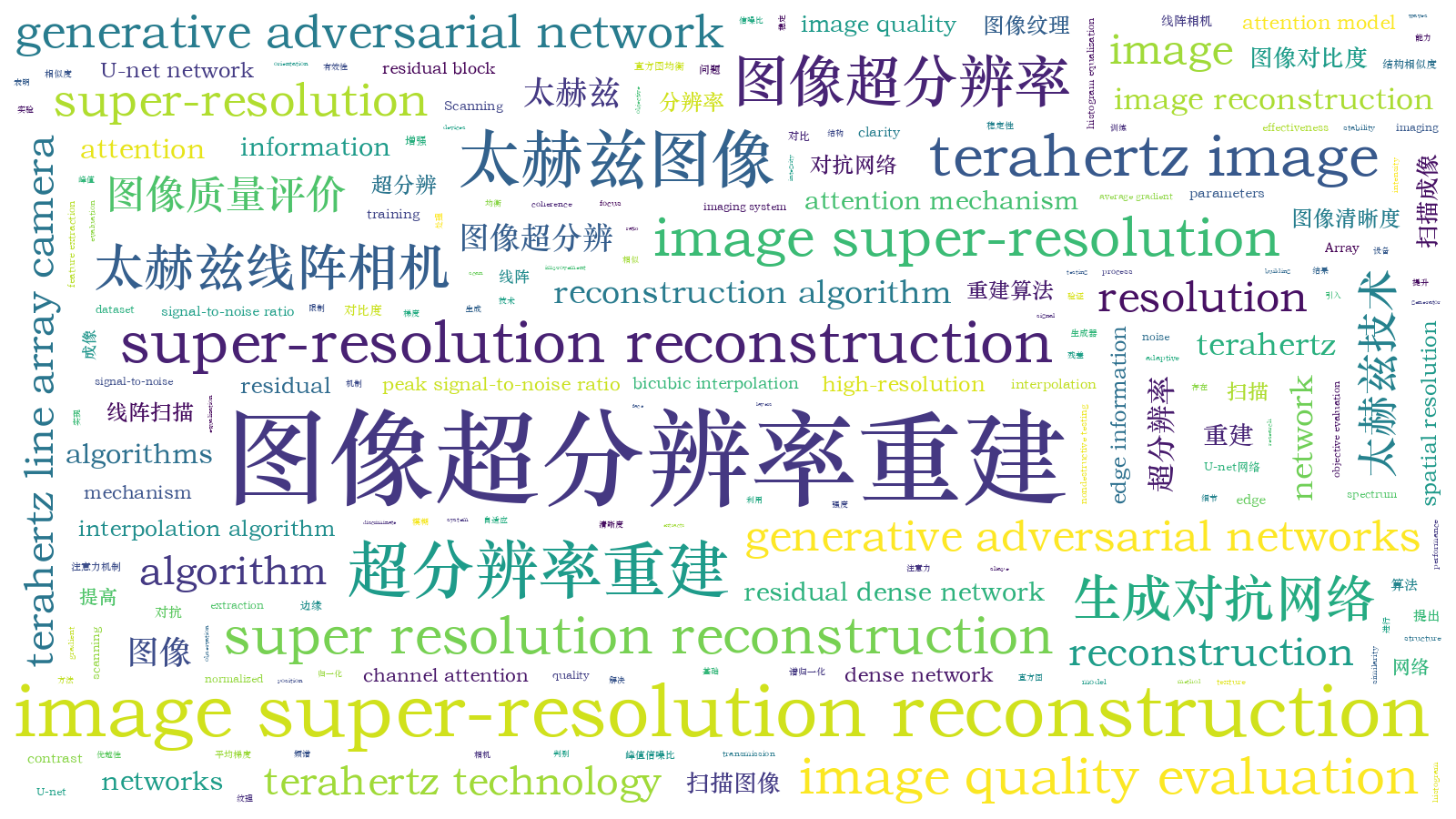基于线阵扫描成像的太赫兹图像超分辨率重建【增强内容出版】
Terahertz waves are widely used in security checks and nondestructive testing. However, because of limitations in imaging devices and algorithms, terahertz images face challenges, such as limited spatial resolution and blurry features. Currently, two main approaches are used to enhance the resolution of terahertz images. The first involves improving the imaging system, whereas the second uses super-resolution reconstruction algorithms to improve image quality. In recent years, research teams have applied convolutional super-resolution networks to terahertz image reconstruction. However, these methods construct network models by increasing the number of convolutional layers, leading to an exponential expansion of the parameters and a lack of specific structures to enhance the reconstruction of image details. Although deeper networks can extract more information for image reconstruction, overfitting complicates training. In this study, a super-resolution reconstruction algorithm is developed based on residual-attention generative adversarial networks to further improve the quality of reconstructed images.
The proposed super-resolution reconstruction algorithm is based on a residual attention generative adversarial network. First, a contrast-limited adaptive histogram equalization method is introduced for terahertz images, effectively addressing the low-contrast issue. Second, building upon the generative adversarial network, a residual generative adversarial network incorporating an improved attention mechanism achieves super-resolution reconstruction of terahertz scanning images. This algorithm features a multibranch residual block convolutional structure and extracts and fuses the feature information from each layer during the feature extraction process. In addition, an enhanced attention mechanism combining spatial and channel attention is added to the residual block. Beyond channel information extraction, it includes orientation awareness and position-sensitive information, compelling the network to focus more on texture and image details while maintaining image shape integrity and reducing the network parameters. Finally, a spectrum-normalized U-net network is employed to discriminate the reconstructed images generated by the generator, thereby enhancing training stability.
Test images from the terahertz transmission scanning dataset are selected [Fig.5(a)] to validate the effectiveness of the proposed algorithm in image super-resolution reconstruction. The results of the two images indicate that the proposed algorithm clarifies edge information [Fig.5(f)]. In contrast, other algorithms such as bicubic interpolation, SRResNet, SRGAN, and ESRGAN exhibit various issues [Figs.5(b)?(e)]. The traditional bicubic interpolation algorithm is overall unsatisfactory and appears blurry. Images reconstructed by the SRResNet and SRGAN algorithms show problems, such as increased noise and suboptimal visual coherence. Although the ESRGAN algorithm improves the clarity compared to the original image, pseudoartifacts in the edges lead to image blurriness. The objective evaluation metrics for the images processed using the algorithm in this study show a significant improvement over those of the original images, and the enhancement is higher compared with those of bicubic interpolation, SRResNet, SRGAN, and ESRGAN (Table 1). The experimental results demonstrate that compared to other image super-resolution algorithms, the proposed algorithm uses low-resolution image information more comprehensively, improving information utilization and exhibiting superior reconstruction performance.
A terahertz image super-resolution reconstruction algorithm based on generative adversarial networks is established to address issues, such as low clarity and blurred edges in images captured by terahertz line-scan cameras. Building on the SRGAN, a residual dense network incorporating an enhanced attention mechanism is introduced, and a spectrum-normalized U-net is used as the discriminative network. The critical parameters in this network can be adaptively updated using the attention model by incorporating pixel coordinates into the attention mechanism. A terahertz image training dataset is established to apply this network to terahertz image super-resolution reconstruction. The experimental results indicate that the proposed super-resolution reconstruction algorithm, which is based on generative adversarial networks and attention mechanisms, qualitatively aligns better with human observation habits, highlighting more nuanced edge information in the reconstructed images. Quantitatively, various metrics for the reconstructed high-resolution images show improvements, with a 7% increase in edge intensity, 12% increase in average gradient, 13% increase in peak signal-to-noise ratio, and 14% increase in structural similarity. These results validate the superiority and effectiveness of the proposed algorithm in enhancing the clarity of terahertz images.
郭宇烽, 金尚忠, 李宏光, 曾子威, 廖文焘. 基于线阵扫描成像的太赫兹图像超分辨率重建[J]. 中国激光, 2024, 51(8): 0814001. Yufeng Guo, Shangzhong Jin, Hongguang Li, Ziwei Zeng, LiaoWentao. Super‐Resolution Reconstruction of Terahertz Image Based on Linear Array Scanning Imaging[J]. Chinese Journal of Lasers, 2024, 51(8): 0814001.







